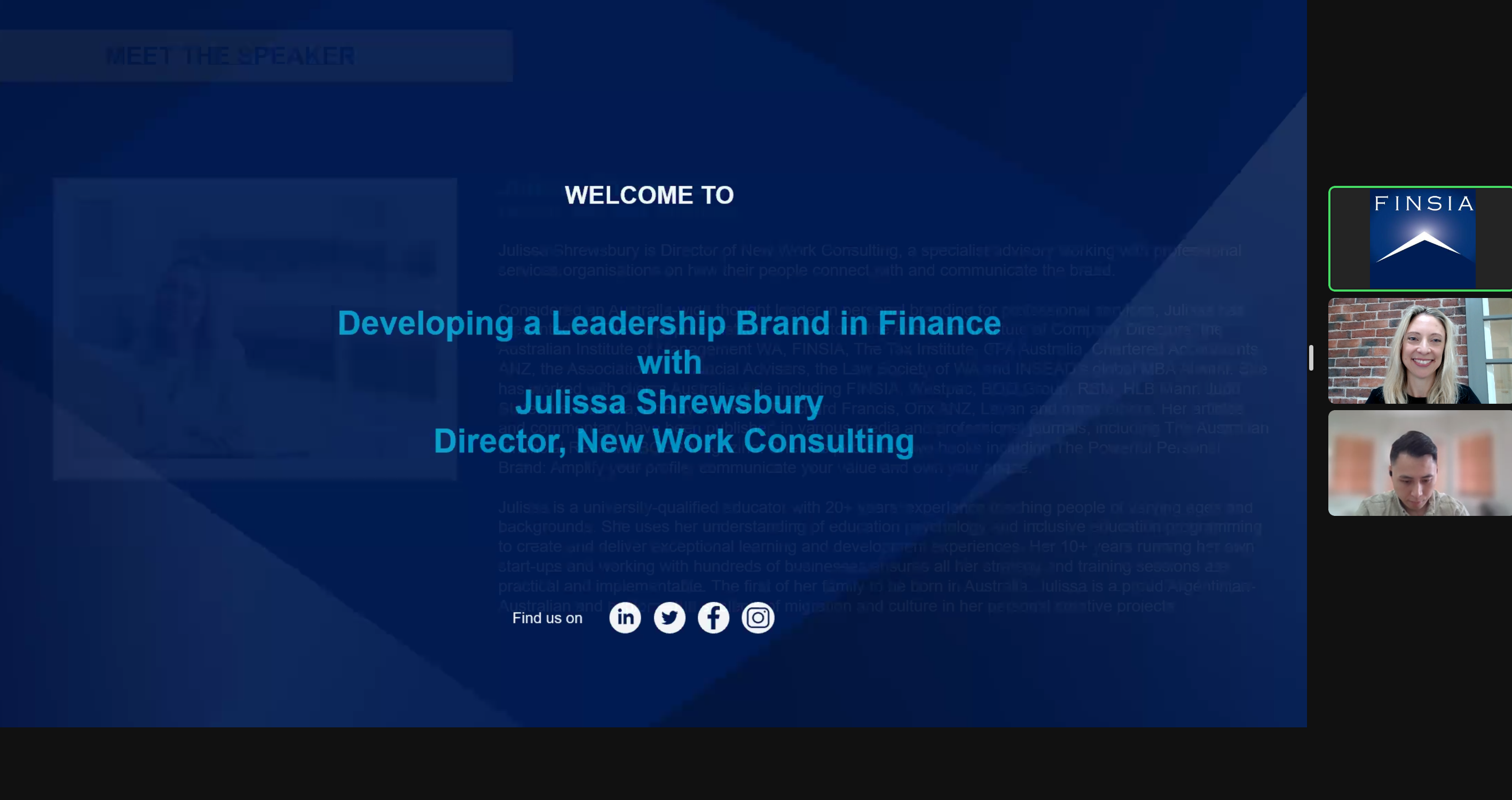Developing your Leadership Brand in Finance 2: Strategy
In Part 1 of this series, I shared the questions my banking and finance leadership audience had during a recent webinar for FINSIA on Developing your Finance Leadership Brand.
In this follow-up post, I share the Leadership Brand Strategy Framework I offered these Finance and Banking Leaders during the session.
Common brand challenges I see for emerging and established Leaders in Banking and Finance:
- Moving to a new portfolio or regional focus in Banking requires establishing a new brand or your brand with a new audience
- For Finance leaders within commercial organisations – being able to talk at the level of the board and be ready for their sharp questioning style is part of being seen as an integral business partner and peer to decision-makers
- Gaining respect quickly when new to sophisticated clients e.g. high wealth individuals or business leaders
- Roadblocks to consistent brand building include high pressure sales targets, deadlines, processes, risk – all while striving to create your own brand, relationships and sales style (for example, some want a style that seeks the win-win over a transactional approach, or prioritising core relationships with referral sources versus being ‘out there’ networking and being face of business… it all depends on you!)
Shifting how you are seen
I’ve talked about some of these ideas in other industries, such as law, and they equally apply in finance and banking.
Which one of each pair do you think you might be seen as?
Order-Taker v Change Leader:
- The what and how of your communication determines which one you are seen as
- Do your actions tell a different story to your words? E.g. ‘I’m focusing on this strategy now and these other items are shelved until next quarter’ v responding to whoever screams the loudest!
Detail-Dumper v Clarity-Bringer:
- Do you send reams of information in an email, or deliver a report which is clear and succinct, empowering a decision?
- Great CEOs, for example, pre-think before every exchange: What is the message this group of people needs to hear from me at this point in time? (They are not really talking as they think, though it may seem this way because it’s so natural-sounding!)
Technical or Client Focus v Nurturing Team:
- It can be a real mindset-shift as a new partner to move from thinking about the work and the client, to thinking about nurturing and leading a team.
- If a professional works more in the background, they can be too technically-focused to serve leadership roles, and they may need to work on leadership development and communication.
Outsider v Integral Business Partner:
- A consultant or external advisor, a siloed department, or only one of you in your department… these people can feel like outsiders instead of essential business partners in the organisation. They have to work harder to be seen as an integral to the business, someone who needs to be in the rooms where decisions are being made!
How do you shift your brand?
In the webinar I discussed the following strategic steps:
Step 1. Get clear on your personal brand goal right now – this can be as specific as communicating impactfully in a certain setting… to broader career goals such as your next move into leadership.
Step 2. Get clear on your personal professional value proposition – just like a product or service value proposition, you can clearly communicate and demonstrate the value that your knowledge and work brings.
Step 3. Get clear on the most relevant platforms to make your brand visible to the right people. This usually starts with a value-positioned introduction (building on Step 2) – within your elevator pitch for networking, and within a snapshot bio for use in media engagements, speaking and emailed introductions – what are the key points you want to hit if you only have 3 lines to do it? Then think about longer form communication, such as your executive summary and CV, and your ‘About’ and ‘Experience’ sections of your LinkedIn profile. Finally, how will you demonstrate and reinforce your brand through your everyday communications – your focus and style when speaking with staff and clients, for example?
Step 4: After all this preparation, you must also make sure you step into your leadership brand with confidence – in the webinar we talked about factors influence – and this is just as much about how you see yourself as it is about how others see you – they are interrelated!


